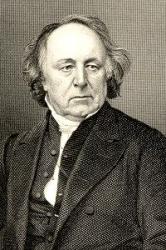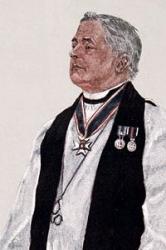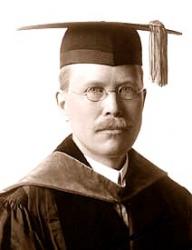Planning worship?
Check out our sister site, ZeteoSearch.org,
for 20+ additional resources related to your search.
- |
User Links
Person Results
‹ Return to hymnal






Export as CSV
Samuel P. Warren
1841 - 1915 Person Name: S. P. Warren Hymnal Number: 367 Arranger of "BONAR" in Hymns of the United Church b. 2-18-1841, Montreal, Que., d. 10-7-15, New York; organist and composer
Samuel P. Warren
Ebenezer Elliott

1781 - 1849 Person Name: Ebenezer Elliott, 1781-1849 Hymnal Number: 129 Author of "When wilt thou save the people?" in Hymns of the United Church Elliott, Ebenezer, commonly known as the "Corn Law Rhymer," was born near Rotherham, Yorkshire, 1781, and died at Barnsley, in the same county, in 1849. The greater part of his life was spent in Sheffield, where he was engaged in the iron trade, and it was in a Sheffield newspaper that many of his poetical pieces first appeared.
He published:—
(1) Night, a Descriptive Poem, 1818. (2) The Village Patriarch, 1829. (3) Corn Law Rhymes, 1831. (4) Poems, 1834 ; and (5) More Prose and Verse, 1850.
A piece or two from these works have been adapted as hymns in some Unitarian Collections. They include "Another year is swallowed by the sea," for the old and new year.
-- John Julian, Dictionary of Hymnology (1907)
Ebenezer Elliott
Théodore Monod
1836 - 1921 Person Name: Theodore Monod, 1836- Hymnal Number: 312 Author of "O the bitter pain and sorrow" in Hymns of the United Church Monod, Theodore, son of F. Monod, Pastor in the French Reformed Church, was born in Paris, Nov. 6, 1836, and educated for the ministry at Western Theological Seminary, Allegheny, Pennsylvania. He entered the ministry in 1860, and has been many years a Pastor in Paris.
--John Julian, Dictionary of Hymnology, Appendix, Part II (1907)
Théodore Monod
William Smallwood
1831 - 1897 Hymnal Number: 167 Composer of "HAMPSTEAD" in Hymns of the United Church
William Smallwood
George Huntington
Hymnal Number: 223 Author of "Two empires by the sea" in Hymns of the United Church
George Huntington
Thomas Binney

1798 - 1874 Hymnal Number: 13 Author of "Eternal Light! 'Eternal Light!" in Hymns of the United Church Binney, Thomas, D.D., b. at Newcastle-on-Tyne, in 1798, and educated at Wymondley College, Hertfordshire. Entering the ministry, he was successively pastor of a congregation at Bedford, an Independent Chapel at Newport, Isle of Wight, and of the King's Weigh House Chapel, London, 1829. The University of Aberdeen conferred upon him the LL.D. degree. He died Feb. 23, 1874. His works, exceeding 50 in number, include Life of the Rev. Stephen Morell, 1826; Money, 1864; St. Paul, his Life and Ministry, &c. He wrote a few hymns, including "Eternal Light! Eternal Light,” and "Holy Father, Whom we praise.” (Close of Service.)
--John Julian, Dictionary of Hymnology (1907)
Thomas Binney
John M. Wigner

1844 - 1911 Hymnal Number: 414 Author of "Come to the Savior Now" in Hymns of the United Church Wigner, John Murch, second son of J. T. Wigner, was born at Lynn, June 19, 1844. He was educated at the Grammar School of Lynn, and afterwards graduated B.A. and B.SC. in the London University. Mr. J. M. Wigner now resides near London, and has been for many years in the India Home Civil Service. He is connected with his father's church, and has done much to promote the spiritual welfare of the young. He is the author of several hymns, three of which are in the Baptist Psalms and Hymns for School and Home, 1882;—
1. "Come to the Saviour now!" Invitation.
2. "Lost one! wandering on in sadness." Return to God.
3. "Lo, a loving Friend is waiting." The Call of Jesus.
The first of these is in the Baptist Psalms & Hymns, 1880, and is dated 1871. [Rev. W.R. Stevenson, M.A.]
-- John Julian, Dictionary of Hymnology (1907)
John M. Wigner
Robert Hall Baynes

1831 - 1895 Person Name: R. H. Baynes Hymnal Number: 263 Author of "Jesus, to thy table led" in Hymns of the United Church Baynes, Robert Hall, M.A., s. of the Rev. Joseph Baynes, b. at Wellington, Somerset, Mar. 10, 1831, and educated at St. Edmund Hall, Oxford, graduating B.A. 1856, and M.A. 1859. Ordained in 1855, he held successively the Curacy of Christ Church, Blackfriars, the P. Curacy of St. Paul's, Whitechapel; of Holy Trinity, Maidstone, and of St. Michael's, Coventry. In 1870 he was Bp. designate of Madagascar; but resigned in 1871. In 1873 he was appointed Hon. Canon of Worcester Cathedral, and in 1880 Vicar of Holy Trinity, Folkestone. Canon Baynes is more widely known as the compiler of some most successful books of sacred poetry than as an original hymn-writer, although some of his hymns are of considerable merit, and are in extensive use. Of these the best known are “Jesu, to Thy table led," and "Holy Spirit, Lord of glory." He was editor of Lyra Anglicana, 1862; English Lyrics, 1865; The Canterbury Hymnal, 1864 ; and the Supp. Hymnal, 1869 (all pub. Lond., Houlston & Wright); The Illustrated Book of Sacred Poems, Lond., Cassell & Co., and is the author of original Autumn Memories and other Verses, Lond., Houlston & Wright, 1869. His hymns appeared in The Canterbury Hymnal, the Autumn Memories, and in the Churchman’s Shilling Magazine, of which he was sometime editor. His Home Songs for Quiet Hours were pub. in 1878, and Hymns for Home Mission Services in the Church of England, 1879. To his eucharistic manual, At the Communion Time, a series of hymns for Holy Communion are added. D. March 12, 1895.
-John Julian, Dictionary of Hymnology (1907)
====================
Baynes, R. H., p. 119, i. Other hymns in common use are:—
i. In his Canterbury Hymnal, 1863.
1. Bend every knee at Jesus' name. Missions.
ii. In Mrs. Brock's Children's Hymn Book, 1881.
2. God Almighty, in Thy temple. Holy Trinity. This begins in his Hymns & Other Verses, 1887, "God Almighty, Heavenly Father."
3. Lord Jesu! on our forehead. Confirmation.
4. 'Neath the stars which shone so bright. Christmas Carol.
5. No room within the dwelling. Christmas.
6. O Man of Sorrows, Who didst die to save. Death and Burial.
iii. In A. J. Soden's Universal Hymn Book, 1885.
7. Great Shepherd of Thy ransomed flock. Holy Communion.
8. Jesu, Thou true and living Bread. Holy Communion.
9. The day is done; beside the sultry shore. Evening. Eternity.
Of these hymns, Nos. 2, 4, 5, 7, 8, 9, are in Canon Baynes's Hymns and Other Verses, 1887. There are also others in the same work which are worthy of notice, especially one for a Flower Service, written in 1885, “Lord Jesu! we adore Thee."
--John Julian, Dictionary of Hymnology, Appendix, Part II (1907)
Robert Hall Baynes
Frederick A. J. Hervey

1846 - 1910 Person Name: Frederic A. J. Hervey Hymnal Number: 302 Composer of "LANDON" in Hymns of the United Church Born: May 18, 1846, Westminster, Middlesex, England.
Died: August 8, 1910, Norwich, England.
Buried: St. Mary Magdalene’s Church, Sandringham, Norfolk, England.
Son of Alfred, Lord Hervey, Frederick was educated at Marlborough and Trinity College, Cambridge (BA 1868, MA 1872). He was ordained a deacon in 1869, and priest in 1870. He served as Rector of Upton-Pyne, Devon (1876); Sandringham (1878-1907); Canon of Norwich (1897); and Domestic Chaplain to King Edward VII (1901).
--www.hymntime.com/tch/
Frederick A. J. Hervey
Lindsay B. Longacre

1870 - 1952 Person Name: L. B. Longacre Hymnal Number: 214 Composer of "NEW AMERICA" in Hymns of the United Church Lindsay Bartholomew Longacre was born in Pottsville, Pennsylvania, on January 26, 1870, the son of Orleans and Rachel (Bartholomew) Longacre. Longacre wanted to become a musician, but pursuant to his father’s wishes, he attended the Columbia University School of Mines and was graduated from there with a degree in mining engineering in 1892. Following a call to the ministry, he attended Drew Theological Seminary, where he received a B.D. degree in 1896, and was subsequently ordained a minister in the Methodist Church that same year.
From 1896-1910, Rev. Longacre served several small churches in the New York Conference.
These included Glenville, St. Luck, Madison Avenue (later called Christ Methodist after a move to a new location), Fifty-Sixth Street Church, Morris Heights, and Woodlawn Heights. His pastorate at Madison Avenue Church was as the Assistant Pastor to Andrew Longacre, his uncle.
In 1910, Dr. Longacre was appointed head of the Department of Old Testament Literature and Religion of the Iliff School of Theology. He held that position for 32 years. On several occasions during his tenure at Iliff, Dr. Longacre also acted as president of the school. He authored four books, a number of articles, and church school curriculum. His books are: A Prophet of the Spirit: A Sketch of the Character and Work of Jeremiah (1917 and 1922); Amos, Prophet of a New Order (1921; translated into Burmese in 1939); Deuteronomy, A Prophetic Lawbook (1924); and The Old Testament: Its Form and Purpose (1945). He was invited to submit three articles to the Abingdon Bible Commentary(1929). These articles are entitled “The Bible as Literature,” Numbers,” and “Joshua.” Dr. Longacre also held membership in the National Association of Biblical Instructors and the Society of Biblical Literature and Exegesis.
During his tenure at Iliff, Dr. Longacre was involved in a controversy known as the “fundamentalist-modernist controversy.” This controversy, which reached its height in the 1920s, grew out of reactions to the liberal approach that the school had taken toward religion and education. These reactions, from both inside and outside the Methodist Church, were in response to the school’s use of higher criticism in the teaching of Biblical studies.
While at Iliff, Dr. Longacre also taught courses in preaching, worship, and hymnology. He had nurtured his love for music as an avocation, and wrote many hymns and songs. Some of these hymns were published in The Riverdale Hymn Book (1912), The Methodist Hymnal (1935), The Hymnal (Evangelical and Reformed Church) (1941), and The Story of Our Hymns: The Handbook to the Hymnal of the Evangelical and Reformed Church (1952). He believed that great hymns were “God-centered.” In addition to composing music, he wrote explanatory notes for various Denver Symphony programs, and had a special love for opera. He also held membership in the Hymn Society of America, the American Guild of Organists, and the Quill Club of New York.
In his courses on worship, Dr. Longacre expected no loess that excellence from his students in planning and leading services. He felt that worship should be be “truly theocentric.” Because of his interests in music and worship, he served on the Commission on Ritual and Orders of Worship of the Methodist Church from 1940-44. The Commission produced a new Book of Worship for Church and Home. Dr. Longacre contributed introductory sentences to accompany selected readings in two sections: “Scriptures for Reading and Meditation” and “Daily Readings and Prayers for a Month.”
Dr. Longacre retired from Iliff in 1942. He and Florence Biggart Longacre, his second wife of six years, then made a brief move to California. (His first wife, Arabella Hyland Longacre, had passed away in 1930.) After returning to Denver, he played a leading role in the 1944 University of Denver production of Thornton Wilder’s Our Town. It was his first acting experience. That same year, the Longacre’s returned to New York City to pursue his interest in music and the arts through the cultural activities of the city. From 1947-1952, Dr. Longacre served as the Assistant Pastor to the Rev. Ralph W. Sockman of Christ Methodist Church.
Dr. Lindsay B. Longacre died at the age of 82 years on September 18, 1952, after a long and distinguished career of service to the church and humanity.
© 2002. Marshall Eidson
http://www.iliff.edu/research/archives/longacre/bio.htm
Lindsay B. Longacre


 My Starred Hymns
My Starred Hymns


